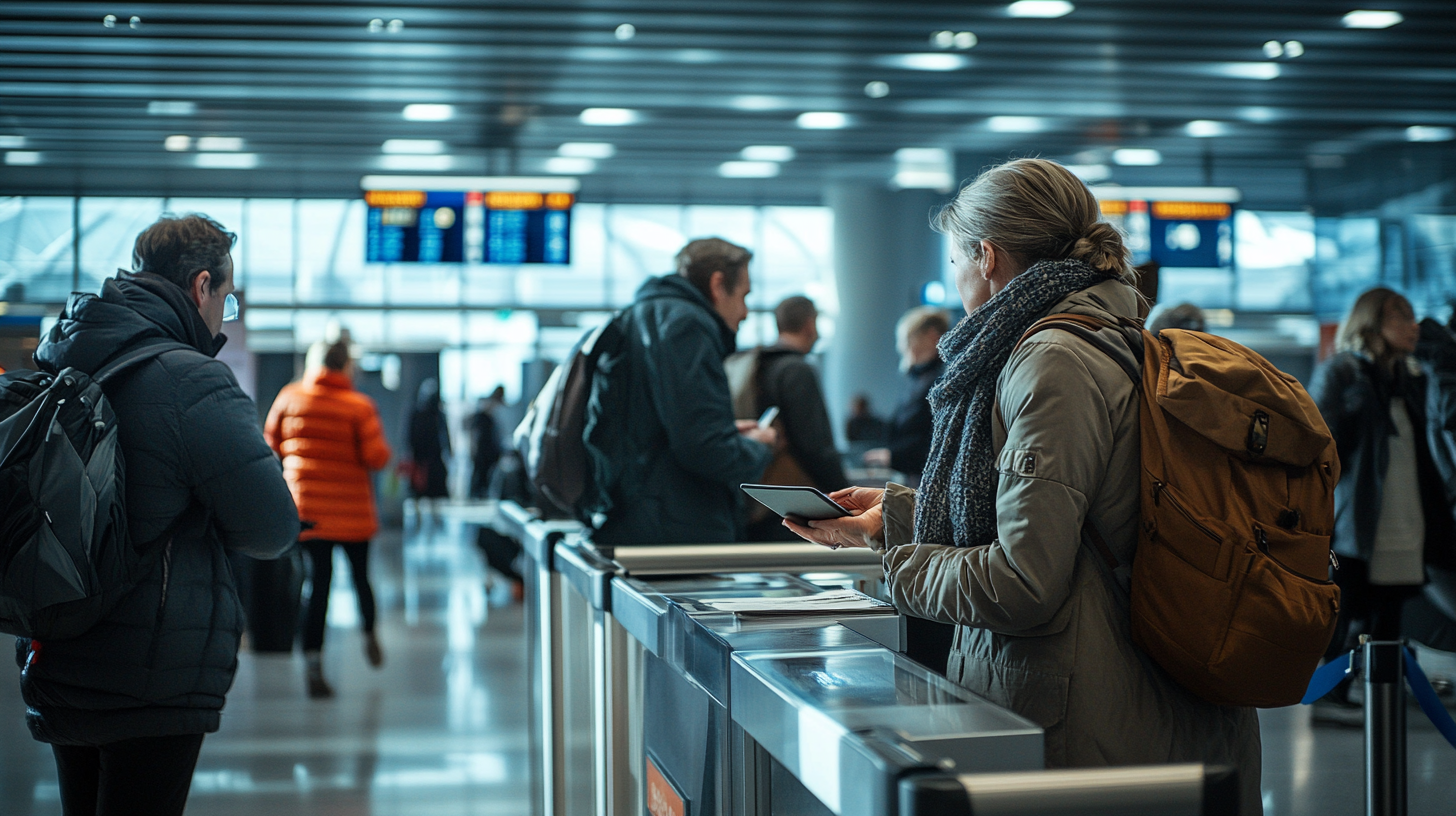Gate Passes Made Easy
I’ve always been fascinated by the idea that I could stroll past airport security without an actual boarding pass in hand. Over the years, I’ve tested this firsthand, following airline rules to get my own gate pass, taking in the hustle beyond the metal detectors. From savoring newly opened terminal cafés to squeezing in a last-minute hug at the gate, I’ve come to realize that these passes truly transform a simple airport run into an immersive travel experience.
In the months I’ve spent mingling with frequent flyers, airline reps, and TSA agents, I’ve noticed that many folks still wonder if gate passes are officially allowed. They are, but you need to follow a set of guidelines that vary by airport—and in some cases, by airline. Armed with proper documentation and a willingness to comply with regular security screenings, you’ll quickly discover that stepping into an airside world without a flight reservation can be surprisingly hassle-free.
Why Gate Passes Exist

After 9/11, airport security ramped up to unprecedented levels, effectively barring anyone without an official boarding pass from venturing through checkpoints. However, certain U.S. airports—like Tampa (TPA), Seattle (SEA), Detroit (DTW), and Pittsburgh (PIT)—introduced TSA-approved visitor or escort passes, allowing non-flyers to access gateside amenities. I remember my early attempts in Detroit, where I was thrilled to find that I could still shop for souvenirs or grab a latte, as long as I followed the screening procedures set in place.
One key driver behind these passes is the desire to offer more inclusive travel experiences. For instance, airlines recognize that many families want to escort loved ones—especially minors, seniors, or passengers with special needs—to the gate. Gate passes fill that gap by granting short-term entry into restricted zones, ensuring that help is available until boarding commences. According to a 2024 TSA report, around 1.2 million gate passes were issued across major U.S. airports last year, creating a noticeable uptick in terminal tourism.
Another critical consideration is security. Unlike the pre-9/11 era, everyone receiving a gate pass must undergo the same TSA screening as ticketed passengers. This keeps the system both open and safe, striking a balance between accessibility and vigilance. In my experience, the extra layer of checks not only protects travelers but also reassures airport authorities that these passes won’t hamper general security protocols.
Variety of Passes: Escort vs. Visitor

Gate passes usually fall into two main categories. The first is the escort pass, which is specifically designed for individuals assisting unaccompanied minors, elderly travelers, or others who need extra support. I once used an escort pass to help my friend’s grandmother catch her flight; it was a relief to see her settled comfortably at the gate, especially after I navigated the final stretch of security on her behalf.
The second category is the visitor pass. This pass caters to anyone who simply wants to explore airport amenities, such as duty-free shops, restaurants, or lounges, without intending to fly. Policies differ by airline, but many will provide these passes at no extra cost if you state a clear purpose—like meeting a family member or checking out a new lounge. I’ve even met people who schedule “terminal hopping” dates, turning the airport into their weekend getaway spot.
In recent years, a growing number of airports and airlines have elected to formalize gate-pass availability to bolster convenience and boost revenues from terminal concessions. A recent study from the International Air Transport Association (IATA) suggests that travelers are increasingly seeking unique airside experiences, further motivating airports to offer more flexible visitor pass programs.
Airline & Airport Policies

Most major airlines—Delta, JetBlue, Southwest, and American—have long recognized the need for gate passes in certain situations, particularly for children flying alone or travelers requiring special assistance. That said, not all carriers are on board. When a friend tried to get a gate pass through British Airways in the U.S., she was disappointed to learn they didn’t permit such access. Instead, she arranged for on-site paid assistance. It’s a clear reminder that a quick website check or phone call can save you time and stress.
Airports have also jumped on the bandwagon. Tampa (TPA) and Pittsburgh (PIT) operate official visitor programs, which I’ve personally enrolled in just to experience the convenience. These programs often require online registration and a valid government-issued ID. You’ll then need to pass through TSA screening just like any traveler. Once inside, you’re free to browse shops, dine, and even lounge-hop—provided you respect each lounge’s specific day-pass or membership rules.
While these policies may vary, they share common threads: a focus on security, an orientation toward customer service, and an effort to make terminals more community-friendly. Looking ahead to 2025, industry insiders predict more airports will adopt visitor pass programs to promote tourism and local commerce.
Tips for a Smooth Process

One of the first things I learned is that communication is crucial. If you’re thinking of getting a gate pass, contact the airline or airport in advance. Provide all the relevant travel details—especially flight numbers and passenger info—so the agent on the phone can guide you through any specific paperwork or ID requirements. Arriving early is also wise; expect to go through a standard TSA checkpoint, which can get crowded during peak seasons.
Beyond the logistical essentials, be prepared for occasional changes in policy. High-alert travel periods may prompt airports to tighten their gate pass distribution. If you’re aiming to help a relative with mobility issues, factor in the possibility of added wait times at security. I’ve witnessed travelers nearly miss their chance to say goodbye at the gate simply because they underestimated queues and screening times.
Finally, pack like a traveler. Even though you won’t be flying, the TSA liquid rules and prohibited items still apply. Think of it this way—if you can’t carry it onto a plane, you can’t bring it through security to the gate. This might sound obvious, but I’ve seen people lose souvenir lotions and sealed water bottles just because they forgot the 3.4-ounce rule still stands.
Our Top Picks for Terminal Tourism

When it comes to gate-pass destinations, Detroit Metropolitan (DTW) ranks high on my list. Its terminal layout is practically made for strolling, complete with specialty shops, relaxing seating areas, and a sleek tram system that whisks you from end to end. Seattle-Tacoma (SEA), meanwhile, is a haven for foodies. I once spent hours sampling local coffee roasters and fresh Pacific Northwest seafood—all without stepping onto a plane.
Pittsburgh (PIT) is often applauded for pioneering the concept of letting non-flyers through its gates, which reinvigorated local interest in its terminals. Meanwhile, Tampa (TPA) rolled out a visitor program specifically designed for lounge enthusiasts, letting you test out premium cabin perks before your next actual flight. Nothing beats sipping on a cappuccino in a quiet lounge, especially when you know you won’t be crammed into a middle seat later.
According to industry data, airports that provide gate passes have reported a spike in both passenger satisfaction and retail sales. It turns out that when you treat the airport like a micro-city—packed with entertainment and dining—more people want to spend time (and money) there. Whether you’re sampling a craft beer flight or checking out a new spa service, some travelers find these mini-adventures just as satisfying as a real vacation.
The Bottom Line

Gate passes are more than just golden tickets for tearful goodbyes; they can be your backstage pass to an ever-evolving world of airport experiences. In my book, they help break down that divide between fliers and non-fliers, creating a space where anyone can join in on the excitement and convenience of terminal life. With a bit of planning, a valid ID, and a willingness to observe airline rules, you can tour duty-free shops, snack on gourmet treats, and wave off family and friends at the very last second.
Ultimately, each airport or airline policy has its nuances, but the concept remains the same. If you plan ahead and follow the procedures, you’ll gain temporary access to the hustle and bustle of airside corridors. For me, it’s always a treat to see how airports keep reinventing themselves, from high-tech kiosks to local artisan pop-ups that captivate visitors. And for those of us who love exploring modern travel culture—flight or no flight—gate passes unlock a hidden layer of adventure, all just a quick security check away.
Final Thoughts

By using a gate pass responsibly, we can all embrace the many sides of airports—be it the culinary offerings, the vibrant shops, or the simple joy of meeting a loved one right where they disembark. From personal experience, I’ve found these passes to be a gateway to discovering how airports are more than just transit hubs; they’re microcosms of global culture and community.
As we move further into 2025, I expect more locations to refine their visitor pass programs, offering additional perks or tech-enabled experiences for non-flyers. Ultimately, this isn’t just about convenience but about creating an inclusive environment where the gateway to air travel can be shared with everyone.
Barry B.’s Take
I can’t help but admire how gate passes let us appreciate the airport at our own pace. Whether it’s watching planes taxi on the runway or sampling international fare at a newly opened café, I find it’s a unique way to tap into the energy of global travel—even if you’re not taking off yourself.
If you’re looking to get the most from your next gate pass experience, I’d urge you to do a little pre-trip research and plan an itinerary that includes a lounge visit, some local eats, and a skillful study of flight departures. You’ll be amazed at how enjoyable an airport can become when you embrace it as your own personal runway.
Stop by milesBUZZ for more insider tips and inspiration!







